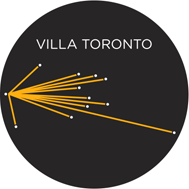ProjecteSD
Jochen Lempert’s work approaches photography with the aim of questioning the criteria used in the search for truth and models of the world. With an informed gaze, Lempert searches for the animal world in the most diverse contexts: from the natural habitat to the Museum of Natural History, from the zoo to the urban environment, as well as in its manifestations in daily life. This interest in the natural world as a subject is further complemented by his exploration of the properties of the photographic image. The raw and seemingly unkempt quality of his hand developed black and white silver gelatin prints, combined with the way they are exhibited unframed, endow the works with a textured, object-like sensuousness. In his presentations, Lempert combines small format pictures with large ones, photographic series with single prints. In its strange mélange of abstraction and figuration, Lempert’s work unfolds in an uninterrupted flow, where each photograph seems like the image of an idea, as evidence of both the simplicity and complexity of time, of the artist’s rich iconography and exceptional way of looking. As Brian Scholis writes, “Far from being mere nature studies, Lempert’s photographs are evidence of an artistic sensibility compelled to wrest order from circumstance, and, through the tight control of progression, variation, focus, scale, and exposure, to make of this order something enchanting”.
Patricia Dauder’s work - drawings, works on fabric, sculpture, films and moving image - responds essentially to visual research (undertaken by the artist / focused) on the possibilities of seeing and representing beyond the evident physical and objectual appearance. Characterized by a notable processual methodology, works become part of research cycles that extend for long periods of time. Form, matter and structure constitute the media through which the artist perceives, interprets and projects her ideas about the passing of time and the notion of space. Observation of the world itself, of its phenomenological dimension, plays an important role in Dauder’s work. However, the images and objects she creates are not primarily a result of direct observation but of a highly mental approach, an intimate dialogue between matter and thought, mediated by an open processual working methodology in which both chance operations and the unexpected behaviour of materials take part in the way form and content come out. The idea of fragment is recurrent in her work and specifically noticeable in recent textiles and sculptural pieces, composed of multiple fragmented units scattered onto fabric surfaces or the floor, that create a visual interplay between presence and absence, what's visible and what's not. Maybe this relationship between the absent element and what is present constitutes an allegory of Dauder’s interests and approach as an artist.
Passatge Mercader 8, baixos 1, 08008 Barcelona
www.projectesd.com
